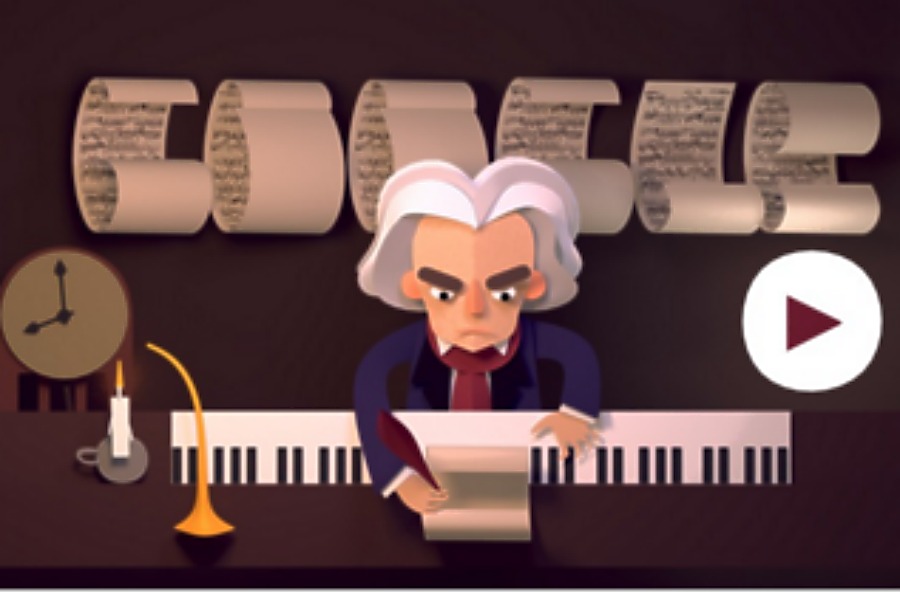Ludvig van Beethoven: Kids connect with his music via Google Doodle
Loading...
Da-Da-Da-DAAAAAH! Thursday’s Google Doodle marking the 245th anniversary of composer Ludwig van Beethoven's birth strikes the right note with kids by engaging future concert goers with an interactive experience that teaches them about the composer's best-known pieces and sheet music.
Many musicians and conductors are ecstatic because they say it helps bring classical music out of the background and back to center stage where Beethoven would have demanded it be.
The tech wizards at Google composed a musical puzzle to honor Beethoven. They also came up with the whimsical storyline of an inconveniently placed pile of horse manure, a windblown set of scores ending up in a tree, and the opportunity for users to reconstruct passages from some of Beethoven's masterworks.
Is the story in the Doodle true?
“It’s a charming fiction,” writes Jeremy Yudkin co-director of the Beethoven Research Center in Boston in an email response.
However, Mr. Yurdkin was not charmed, adding that “It's a kindergarten representation of one of Western civilization's greatest and most serious artists. If Google wanted to mark the date of Beethoven's birthday, it could have done so with one of the few remaining genuine portraits of the man, rather than with a cartoon figure.”
Others disagree. “It’s brilliant, absolutely brilliant and clever,” says Barbara Barstow, former artistic director of the New Jersey Youth Symphony in an interview. “And we needed it. Classical music needed this. Kids love Beethoven because they all know ‘Da Da Da Da!' [from the Fifth Symphony]. They really get his passion. That’s the riff that woos them.”
Ms. Barstow says that this kind of representation of Beethoven is a boon because, “I’ve said it before and it’s still true that America is running out of audience faster than it is running out of musicians, so this kind of thing is exactly what we need to engage young audiences and build a future for classical music.”
“While we are teaching children how to play classical music, we are not building audiences,” Barstow says.
George Marriner Maull, who founded The Discovery Orchestra in 2006 in New Jersey, explored the Doodle during an interview and echoed his colleague’s thrill and concern.
“Oh, this is fantastic! It encourages people to listen carefully to the music and then figure out how to put these little bits of score in the right order,” says Mr. Maull.
A 2014 Bachtrack study, titled “Classical Music Statistics: A changing of the guard,” showed that of 16,500 concerts performed, Beethoven’s works held five of the top ten most performed classical works.
Maull says that playing and listening are not one in the same.
“One of the biggest issues facing classical music, beyond how it’s financed, is that while kids are learning how to play, they’re not learning how to listen to classical music,” Maull adds. “The reality is that music has been a background thing for generations. We have trained people not to pay attention to the music because it’s just an enhancement,” Maull says. “Whereas people like Beethoven actually expected you to give his work your undivided attention for prolonged periods of time.”
Were Beethoven alive today, Maull says he would be shocked to learn that most people will not sit through the five minutes it takes to listen to just the first movement of his Fifth Symphony.
“The more detail that we notice the richer the listening experience can become and that’s what Discovery Orchestra is all about,” Maull concludes. “Giving people the listening skills that help people really connect with classical music. It’s not to provide more jobs for musicians so much as it is to change the lives of those who learn to listen.”








